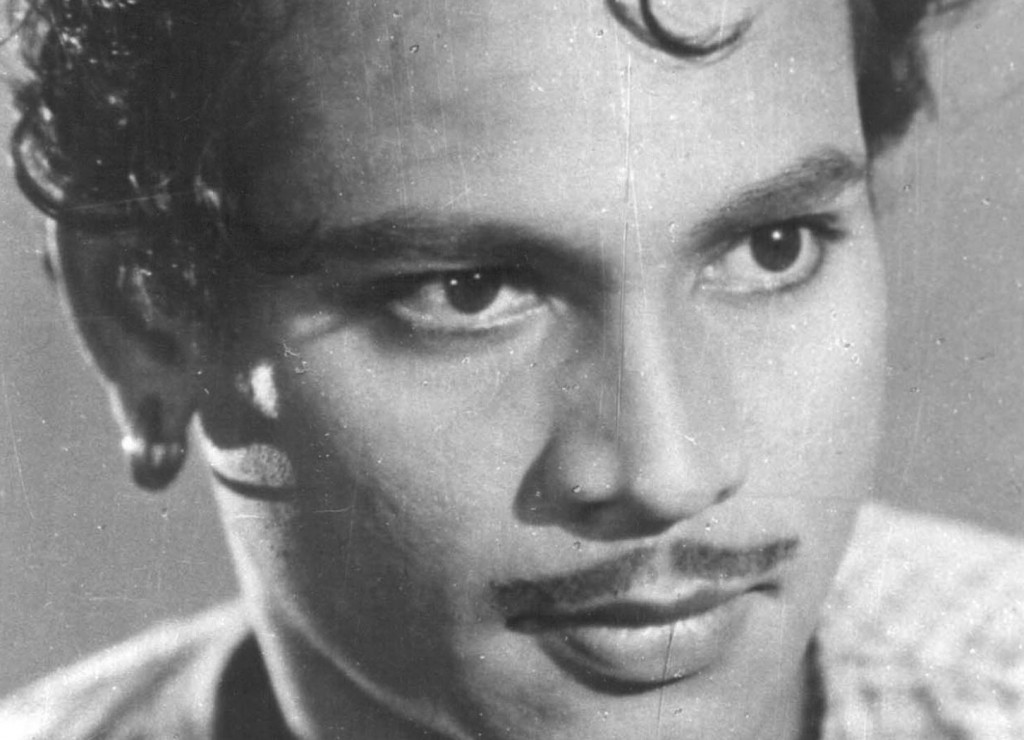P Jairaj had a successful career as a leading man in both, the silent era as well as the talkies, having acted in 11 silent films and over 200 talkie films during his career.
He was born on September 28, 1909, in the Nizam state of Karimnagar. His father was a public works department accountant. After he finished school in Hyderabad, Jairaj joined Nizam’s College for a Bachelor of Science Degree. However tired of his family dictating his life to him, Jairaj dropped out of college and ran away to Bombay to seek the proverbial pot of gold. A fellow student and friend, Rangaiah, rescued him from doing odd jobs at the dockyards. As manager of Mahavir Photoplays, a film distribution company, Rangaiah saw the making of a screen hero in Jairaj, who was by then a good-looking and well-built young man.
Jairaj’s first film was Jagmugti Jawani (1929) in which he not only played friend to the hero, Madhav Kele, but also doubled for all of Kele’s stunt scenes. He was then hired on a monthly salary as a full time employee of Young India Pictures. He was given two square meals a day and three rupees a month and shared a room in Girgaum with four other borders. Raseeli Rani (1930), his second film, saw Jairaj play the romantic lead opposie Madhuri. The film was a success and established Jairaj as a promising new hero. Jairaj did other films at Young India all opposite Madhuri before moving on to Sharda Films where his salary jumped to thirty-five rupees and then seventy-five rupees a month. Here he was paired mostly opposite Zebunissa and the two were known as India’s Gilbert and Garbo! His silent films were inspired by foreign spectaculars – Italian and American but even more so by novels. For eg, Raseeli Rani was based on Anthony Hope’s The Prisoner of Zenda. Jairaj played mostly a swashbuckling hero in these films.
Recalling how films were made then, Jairaj said, “All shooting took place in natural sunlight. Our day began and ended early. We reached the sets by 7.30 a.m. and packed up by 5 p.m. ……. We each learnt our craft by trial and error. We discussed the story together, developed it and then started shooting. ……. It was a challenge. You had to make people laugh, cry or get angry through facial expressions and gestures only. Charles Chaplin is the best example of this art. But then, cinema, unlike the stage, is a visual medium. That was why silent movies had universal appeal.”
Though he made it big as an actor, actors – even male ones – were considered scum in those days and Jairaj’s own brother didn’t speak to him for years declaring his brother had joined the bioscope! The release of Alam Ara (1931) saw the Talkie film come to India. Jairaj switched over to the talkies relatively smoothly. Being a native Hyderabadi, he was fluent in Urdu and this helped immensely. Shikari (1932), an adventure film bristling with lions, tigers and snakes, was his first talkie. But with the talkie came another problem. Actors had to sing their own songs and Jairaj was no singer. He did initially feel left out but the advent of the playback system in 1935 solved that problem. Jairaj played a variety of roles and played a leading man in all genres of films right through the 1930s, 40s and 50s. He starred opposite the top actresses of the day – Bibbo (Mazdoor (1934)), Mehtab (Leatherface (1939)), Devika Rani (Hamari Baat (1943)), Leela Chitnis (Char Ankhen (1944)), Noor Jehan (Humjoli (1946)), Nargis (Anjuman (1948), Darogaji (1949)) and Suraiya (Rajput (1951))just to name a few. He also directed Dilip Kumar’s second film at Bombay Talkies, Pratima (1945).
The 1950s was a prolific period for Jairaj. He starred in a number of successful screen versions of the lives of famous men due to his royal looks and muscular build like Amar Singh Rathod, Prithviraj Chauhan and so on. He also produced and directed a film – Sagar (1951) but the film, based on Lord Tennyson’s Enoch Arden starring Nargis and Bharat Bhushan alongside him, flopped at the box-office. Jairaj admitted, “I did not have the business acumen to produce and promote a film. Unlike others producers, I had invested my own money.”
https://www.youtube.com/watch?v=qGXgSnx6Tjg
From the 1960s, Jairaj began accepting character roles. He also acted in Mark Robson’s controversial Nine Hours to Rama (1963). The film and the book it was based on are said to be still banned in India. Among other films, he did include MGM’s Maya (1966), starring Clint Walkar and IS Johar.
Jairaj continued acting through the 1980s and was seen in films like Masoom (1982) and Khoon Bhari Mang (1988) before finally retiring in 1994. Ironically, Jairaj passed away on August 11, 2000, a day before his biography Jeevanachi Bharati Ohoti written by Shashikant Kinikar was to be released. It is indeed shameful that no newspaper gave his death more than a cursory paragraph. This, when he is a Dadasaheb Phalke Award Winner for his contribution to Indian cinema…
Some of Jairaj’s other films include Rifle Girl (1938), Bhabhi (1939), Khilona (1942), Mera Gaon (1942), Tamanna (1942), Nai Kahani (1943), Shah Jehan (1946), Badbaan (1954), Munna (1954), Amarsinh Rathod (1956), Hatimtai (1956), Pardesi (1957), Char Dil Char Raahen (1959) and Razia Sultana (1961).



Thanks Karan, many a times I felt he was an unsung hero